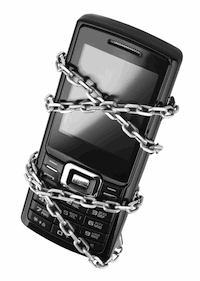More people are flocking to their smartphones and tablets, leaving their notebooks behind. Attackers are certain to try to profit from this trend.
There’s seemingly no end to the productivity gains from smartphones and tablets. With the anywhere access to email, applications, and data, workers are using their devices to do everything from staying in touch with co-workers on social networks to accessing and adding data to their CRM applications.
Although none of this may sound entirely new, it’s not just about the technology, but also the rate of its adoption. Mobile has hit its inflection point. In the third quarter of 2010, according to the research firm Gartner, smartphone sales were up 96 percent from the same period a year ago.
Where people go, attackers follow. The trouble is that these devices are not exactly secure. We’re already seeing malware specifically designed to attack mobile devices. Although such malware is not a dire threat now, in the months and years ahead it most certainly will be. Consider the rootkit designed by scientists at Rutgers University that burrows into the heart of the smartphone to access its microphone, GPS, and battery. This malware was a proof-of-concept and was not designed to be used on real-world attacks, but it showed just how easy it is to turn on the phone’s microphone to snoop, send the location of the phone, and perform other undesirable shenanigans.
Traditional viruses have also been knocking on the keyboards of mobile phones for some time. Consider this 2008 report, when viruses such as the SymbOS/Beselo and the WinCE/InfoJack.A struck. That was also when the first Trojan aimed at the iPhone was unleashed. Although none of these viruses have hit critical mass, remember that after the Morris worm struck the Internet in 1988, it wasn’t until 1999 that mass e-mail viruses received any attention as a risk to mainstream users.
Free Research Report – Mobile & Smart Device Security Survey 2010
As our dependence on mobile technology is growing, I doubt it will take that long this time around.
Experts expect other types of malware to proliferate as well. For instance, there’s the threat of rogue applications being installed on mobile devices in order to steal data at a later point. Mobile devices can also be turned into spy devices. For example, software bugs can be installed on mobile devices and used to snoop on telephone conversations, grab text messages, and listen to conversations occurring within a room anywhere in the world, such as the proof-of-concept mentioned above.
These attacks are just as straightforward as other attacks we see today. First, the attack software is installed on the target’s phone. To this end, users may be lured to a malicious website were the attack software is downloaded, perhaps by a link in a text message. Once the target opens what seems to be a message, the software stealthily installs itself. In either case, once installed, the eavesdropper can actively monitor all incoming and outgoing calls, read all text messages, and listen in to any ambient conversations by remotely activating the microphone at any time.
While such attacks are specific to mobile phones and some tablets, expect the same types of attacks that have plagued PCs for years to also hit mobile devices—namely, viruses, spyware, worms, and Trojans—designed to snoop, steal, or destroy data.
So how do enterprises protect themselves?
The first line of defense does not have much to with technology, but everything to do with training and awareness. Enterprises can have the most elaborate defenses in place and still be humiliated by a single user’s mistake. The first step is to educate your end users to:
1. Never leave their phone unattended. It only takes a few minutes for someone to install the software on and taint a phone with malware. It doesn’t take long for an attacker to copy the data on the phone either.
2. Don’t allow others to make phone calls from their phone. If they do, make sure they never leave sight of their phone. Remember, most often the person installing the spy software on a target’s phone is not some shady character wearing a black trench coat, but someone very close to them.
3. If your phone has a feature to automatically password protect it during any inactivity, enable it.
4. Keep current with your phone’s security updates and firmware.
In the year ahead, as employees not only leave their notebooks behind to work on their mobile phones and even tablets, it’s important to ensure that users know the same security rules apply: Beware where one surfs and where one downloads software and always keep in mind that smartphones are powerful computers in their own right. Remind them that the data on their mobile devices is just as sensitive as that held on their PCs and that viruses, worms, spyware, and rootkits can do the same damage whether they hit a system within a datacenter, on a desk, or within their palm.












